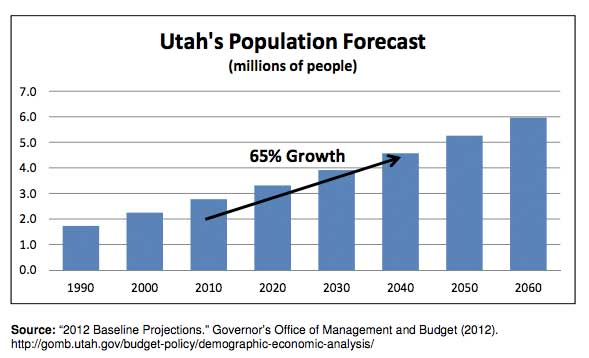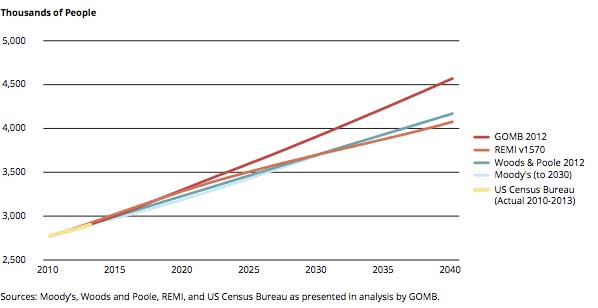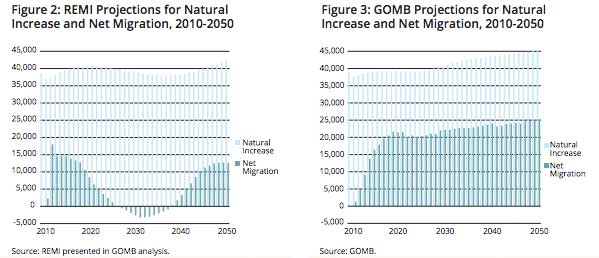Not all Summit County Population Forecasts Agree and We Need to Consider That When Making Plans
If you follow the Wasatch Mountain Accord, read about local government meetings, or listen to the radio you probably know that the population of Summit County is estimated to grow by over 143% to 88,000 residents by 2050. Just this morning KPCW’s Leslie Thatcher mentioned it again during an interview with Dave Ure. This 143% number is important because it forms the basis for all sort of regional planning like economic development, transportation management, water management, etc. It has become the defacto statistic relied on by many to make decisions.
Yet, not everyone agrees with that forecast. Since it is so heavily used, it’s important to understand where the number comes from, what it’s based on, and what opposing models show.
In 2012 the Utah Governor’s Office of Management and Budget (GOMB) released reports forecasting population growth through 2050. It shows huge growth for the state overall and Summit County as well. Here are the overall projections:
It makes sense for this report to be used officially, since it came from the Governor’s Office. It also makes sense why people would want to use this report because it justifies growth, development, and spending…which everyone from planners, to builders, to developers like. If huge growth is coming, then something must be done (i.e. planned or built) to solve it.
Yet, The Utah Foundation, an independent public group, and who’s contributors include Rio Tinto, Love Communications, George S. and Dolores Eccles Foundation, Westminster College, and IHC among others indicate that this isn’t the only forecast. They state, “There are various entities that produce population projections – universities, private firms, metropolitan planning organizations, and governments to name a few. The process each firm uses to create projections is unique to the firm. However, the economic climate is a major variable in all of the analyses. Job growth is a leading cause of in-migration and to retain population in Utah and will in turn have an impact on overall population growth.”
With that in mind, let’s look at two different forecasts, the GOMB model and the Regional Economic Models Inc (REMI) model. GOMB predicts by 2040 Utah will have an additional 2 million people. REMI appears to predict an increase of 1.3 million people. In fact, GOMB’s estimates are the highest of any of the models in a recent Utah Foundation report:.
While many would argue that 1.3 million is still significant growth, and it is, it is 35% lower growth than the GOMB estimate. This would indicate Summit County’s population would be at about 69,000 instead of near 90,000 in 2050.
The other different between the two models is the GOMB model shows almost straight-line growth of population based on new births and net migration of people into the state. However, REMI shows a net migration out of the state between 2020 and 2040 (and then a net migration back in after that). In many ways, having a net outflow at some point seems more realistic than constant growth to the moon, as represented in the GOMB analysis.
It is important to know the source of our numbers when making crucial decisions that impact the citizens of Park City and Summit County. While it is likely growth will continue, we should first agree,that we agree, on the baseline assumptions that drive everything else.
The Governor’s numbers are “official” but they are also the highest of any forecast. They have been based on huge net migration and economic growth that has occurred since the Olympics in 2002. They forecast that this will continue unabated. Just like home prices in 2007, this may not be the case.
Note: Unless otherwise specified all graphs used in this post can be found in Utah Foundation report mentioned above.




Comments
Leave a Comment